
Runners looking for faster times, less bodyfat, and help preventing, or recovering from, an injury would do well to consider adding a weight lifting routine to their training program.
"What? How can weight lifting help my running? Won't weight lifting make me big, and bulky like Arnold Schwarzenegger? Won't this slow me down"?
No. Not if done correctly. A properly constructed resistance training program is a beautiful compliment to running. The key to success is to keep the weights light, and the repetitions of a given exercise, high. This low resistance / high rep approach ensures the benefits from weight training without the unwanted excess of the bulky, heavy, fast-twitch muscle found in the Arnolds of the world.
Resistance training for distance runners can help in several ways. First, strength gains can help in circumstances where a runner needs a little extra power, such as going up a hill. It is no secret that you will be better at running hills if you train by running hills. Hill repeats are an example of a resistance exercise that helps develop the muscles and strength needed to run up hills. Another performance benefit comes from keeping the "power platform" in good shape. This region consists of vital anchoring and supporting muscles abdominal, back, and pelvic region and provides the necessary framework for running. Thus, the muscles which are directly responsible for forward motion have a flexible, yet stable, platform. Sit-ups, back extensions, and pelvic stabilizing exercises (e.g. one leg squats, hip adduction, hip abduction) can help keep weakness out of your stabilizers.
Weights can also help you lose unwanted fat. As a weight training program progresses there is an increase in muscle mass. The increased muscle mass requires a greater expenditure of calories at rest. Thus a leaner individual (less % body fat) will use more calories sitting on the couch, than an individual of the same weight, but higher percentage body fat. The bonus is that the the calories for this increased basal metabolic rate come primarily from fat.
Overuse injuries are extremely common in runners. One frequent circumstance is that a certain muscle group becomes shortened, tight and weak as the result of overtraining or a biomechanical problem. This often goes unnoticed by the runner for a considerable period of time until "suddenly" an overuse injury occurs. Resistance training can help show you weak or tight areas before they cause problems. Likewise, recovery from an injury often involves strengthening or "retraining" a given muscle or group. A few good exercises for injury prevention are eccentric hamstring curls, standing hip flexion, one-leg squats, and quad extensions. Finally, if you're one of those runners that always seems to have tight or sore neck and/or shoulders, then a light upper body routine combined with stretching may be your cure.
"What? How can weight lifting help my running? Won't weight lifting make me big, and bulky like Arnold Schwarzenegger? Won't this slow me down"?
No. Not if done correctly. A properly constructed resistance training program is a beautiful compliment to running. The key to success is to keep the weights light, and the repetitions of a given exercise, high. This low resistance / high rep approach ensures the benefits from weight training without the unwanted excess of the bulky, heavy, fast-twitch muscle found in the Arnolds of the world.
Resistance training for distance runners can help in several ways. First, strength gains can help in circumstances where a runner needs a little extra power, such as going up a hill. It is no secret that you will be better at running hills if you train by running hills. Hill repeats are an example of a resistance exercise that helps develop the muscles and strength needed to run up hills. Another performance benefit comes from keeping the "power platform" in good shape. This region consists of vital anchoring and supporting muscles abdominal, back, and pelvic region and provides the necessary framework for running. Thus, the muscles which are directly responsible for forward motion have a flexible, yet stable, platform. Sit-ups, back extensions, and pelvic stabilizing exercises (e.g. one leg squats, hip adduction, hip abduction) can help keep weakness out of your stabilizers.
Weights can also help you lose unwanted fat. As a weight training program progresses there is an increase in muscle mass. The increased muscle mass requires a greater expenditure of calories at rest. Thus a leaner individual (less % body fat) will use more calories sitting on the couch, than an individual of the same weight, but higher percentage body fat. The bonus is that the the calories for this increased basal metabolic rate come primarily from fat.
Overuse injuries are extremely common in runners. One frequent circumstance is that a certain muscle group becomes shortened, tight and weak as the result of overtraining or a biomechanical problem. This often goes unnoticed by the runner for a considerable period of time until "suddenly" an overuse injury occurs. Resistance training can help show you weak or tight areas before they cause problems. Likewise, recovery from an injury often involves strengthening or "retraining" a given muscle or group. A few good exercises for injury prevention are eccentric hamstring curls, standing hip flexion, one-leg squats, and quad extensions. Finally, if you're one of those runners that always seems to have tight or sore neck and/or shoulders, then a light upper body routine combined with stretching may be your cure.
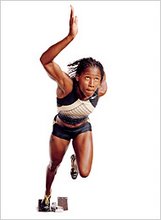
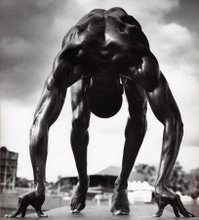


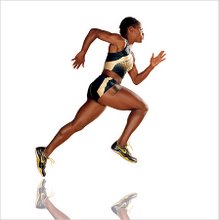
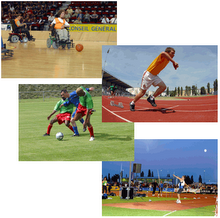




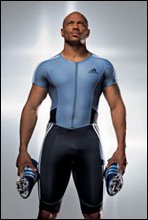



Hiç yorum yok:
Yorum Gönder